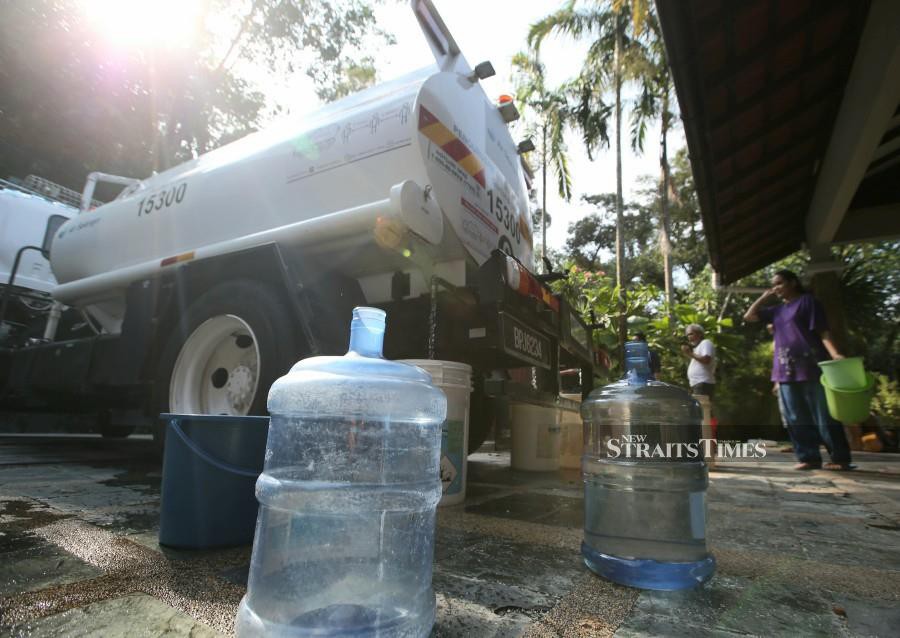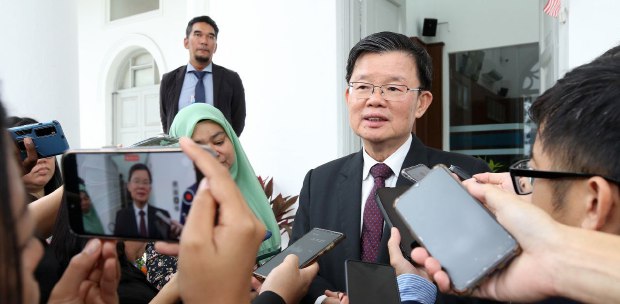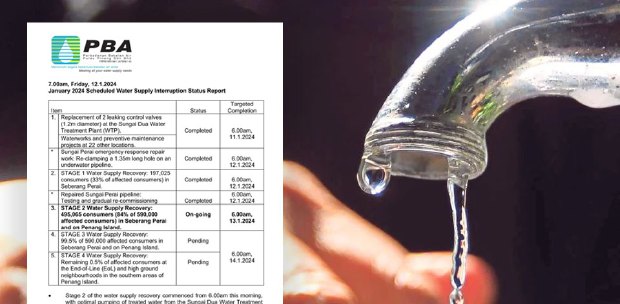IT has been a "horrible year", said the NST Leader last Wednesday. On the same day, a Malay daily said "4 million people are still waiting". They were referring, of course, to Selangor's infamous water woes.
I asked my son, who lives in Shah Alam with his wife and three children, if he wishes to come back to Kedah. He said he will stay on in Selangor, still hopeful that things will get better in due time.
When I asked him if he can still remember the old adage "If it ain't broke, don't fix it", he laughed and shot back "It is broken, but they don't see it that way".
For water resources management expert Dr Chris Perry, good water resources management must have these elements:
INFORMATION (understanding) on how much water is available;
PRIORITISING allocation — sectoral priorities, economics, special interest groups;
SETTING down rules — translating priorities into laws and procedures on surface water rights, ground water rights, emergencies;
ASSIGNING responsibility — of basin management authorities, agencies;
DEVELOPING the facilities (assets) — such as dams, canals, well fields, treatment plants, etc.
In late October 2018, deputy director for the Smart Selangor Delivery Unit Dr Fahmi Ngah said that the Smart Selangor 1.0 Blueprint was ready to be approved and made public in December. The blueprint, which aims to transform the cities within Selangor into smart cities, contains 12 core focuses — one of which is "smart water management".
It is now two years later, and my son and his fellow residents in Shah Alam are asking "what happened to the smart water management"?
In December 2019, a news portal published a piece titled "Two decades of unending Selangor water crises", where it said that the state has a "decentralised, disorganised water management system as a result of a decade of under-investment and failed privatisation…"
The document further said that "We can only react to instances of pollution as they arise" but we failed to "proactively work to reduce the possibility of pollution from the source". Since we do not have a "significant backup water reserves for Selangor", our water system is completely vulnerable.
Recent events proved the vulnerability of the system. Last week, water supply to 59 areas in Klang/Shah Alam and Kuala Langat districts was disrupted following a burst pipe at a construction site in Shah Alam. Fortunately supply was fully restored later.
On Oct 17, Air Selangor issued a statement that a total of 686 areas would be affected by another disruption because the Sungai Selangor Water Treatment Plant phase 1 had to be shut down to enable repair works to be carried out on a leaking pipe that supplies treated water. The statement added that water supply "will return to normal by 2pm".
Again on Oct 19, Air Selangor announced that a new disruption would affect over a million water consumers living in 1,292 areas. According to Air Selangor, it must shut down the water treatment plants at Sungai Selangor Phase 1, Phase 2, Phase 3 and Rantau Panjang following contamination detected in the raw water source from Sungai Selangor. With the shutdown of the four treatment plants, users in affected areas will face unscheduled water disruption again.
Are these recurrent disruptions preventable or avoidable? I think so. Two years ago, in March 2018, the Energy, Green Technology and Water Ministry's secretary-general, Datuk Seri Dr Zaini Ujang, told the media that the real reason behind Selangor's water woes was that the state has been suffering from low water reserve margin.
"In the event of a burst pipe, damaged water treatment plant or sudden increase in water demand... there is a high possibility that certain areas in Selangor would experience water disruptions," Zaini explained.
An ideal water reserve margin of a state should be at least 10 per cent to brace for possible water disruptions. Selangor opposition leader Rizam Ismail said that the government was only good at "reacting" after a water disruption occurred, but failed to provide a long-term solution to the broken down water management system in the state.
Pertubuhan Jalinan Sukarelawan Malaysia president Isham Jalil said that a solution to the state's water woes was suggested as early as 2008 — the restructuring of its water assets and the upgrading of its water infrastructure capacity. The frequent water disruptions could have been prevented if the restructuring exercise was not delayed.
The writer, a former federal counsel at the Attorney-General's Chambers, is deputy chairman of the Kuala Lumpur Foundation to Criminalise War
The views expressed in this article are the author's own and do not necessarily reflect those of the New Straits Times






